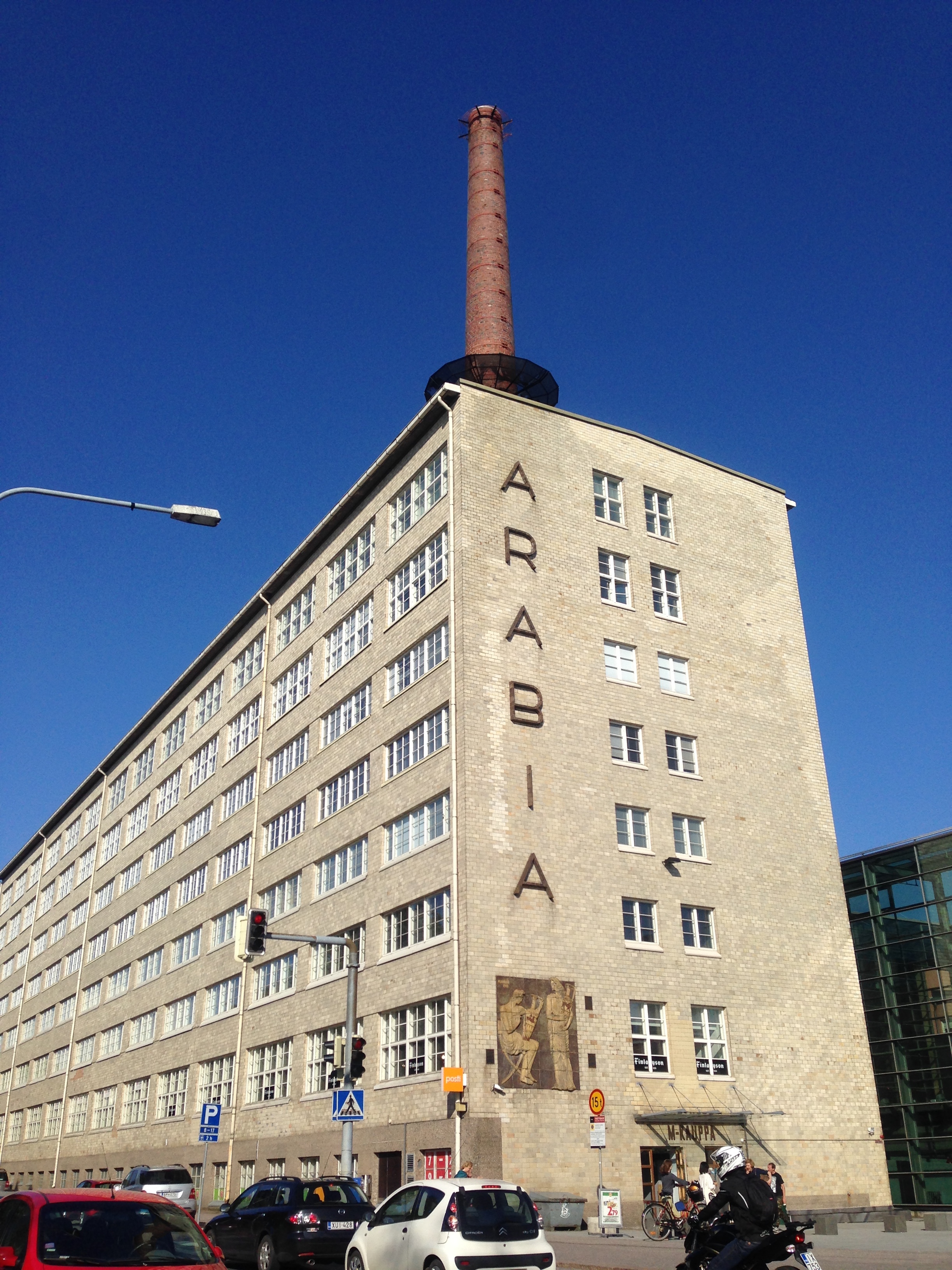
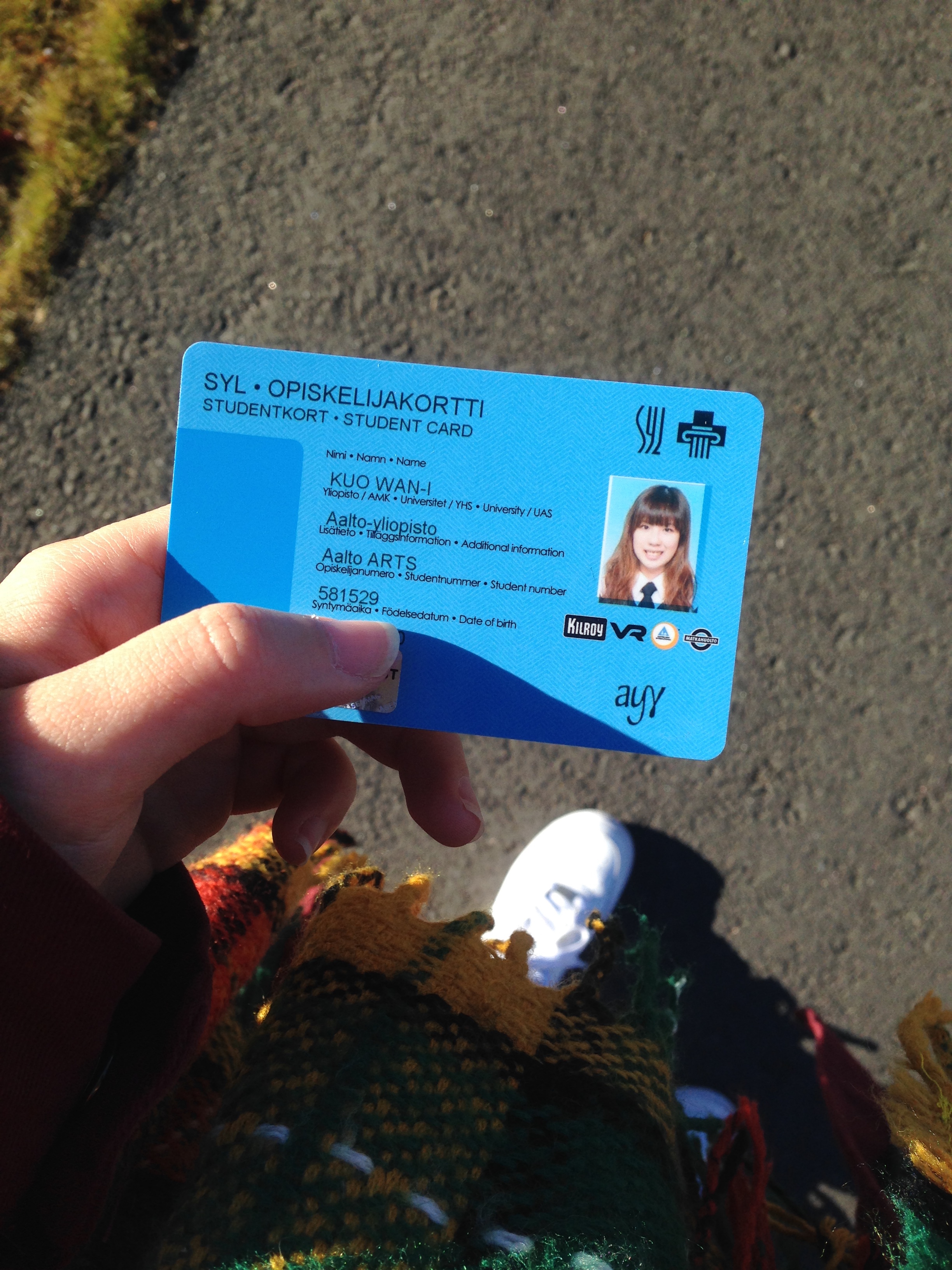

This is undoubtedly the most precious and life-changing period of time for me: the life in Finland as an exchange student in CoID of Aalto University. Collaborating with students from all over the world expands my horizon.
Starting in “INTRO”, the warm-up project for all students in the design department, I had the encourage to dream and design for a better future. The course "User Inspired Design" made me realize the power of empathy, taking me step by step towards human-centered design.
Helsinki, for me, it’s a place with serenity. I enjoyed waking up early, making myself a breakfast and meditating in the calm atmosphere. Also, the scenery is too good to be true!
This was the course I took in Finland that made the greatest influence not only to my perception in design, but also the philosophy of life.
The User Inspired Design course provides an introduction to the human-centred and collaborative design competence area. It consists of two parts: Understanding User and Use (UIDu) and Illustrating User and Use (UIDi). The two parts are designed so that students put what they learn in UIDu into practice in UIDi though project-based work.
UIDu gives students a covering understanding of the different orientations within the domain of humancentred and collaborative design. UIDu gives an introduction to the vocabulary, background and methodology of usability, design ethnography, user experience, co-design, interaction design, service design, accessibility and socially responsible design.
Visual Annotated-Bibliography(VA-bib) is a list of sources including books, articles, documents, conversations, images, audios, videos, and so on. In an visual annotated bibliography, each reference is followed by an image that represents the source, a short descriptive and evaluative paragraph. It is quite helpful to organize the references and literature reviews for research.
Students develop analytical and critical thinking skills, as well as academic skills through creating a well-researched and well-written essay that clearly argues a standpoint. The topic of the essay is:
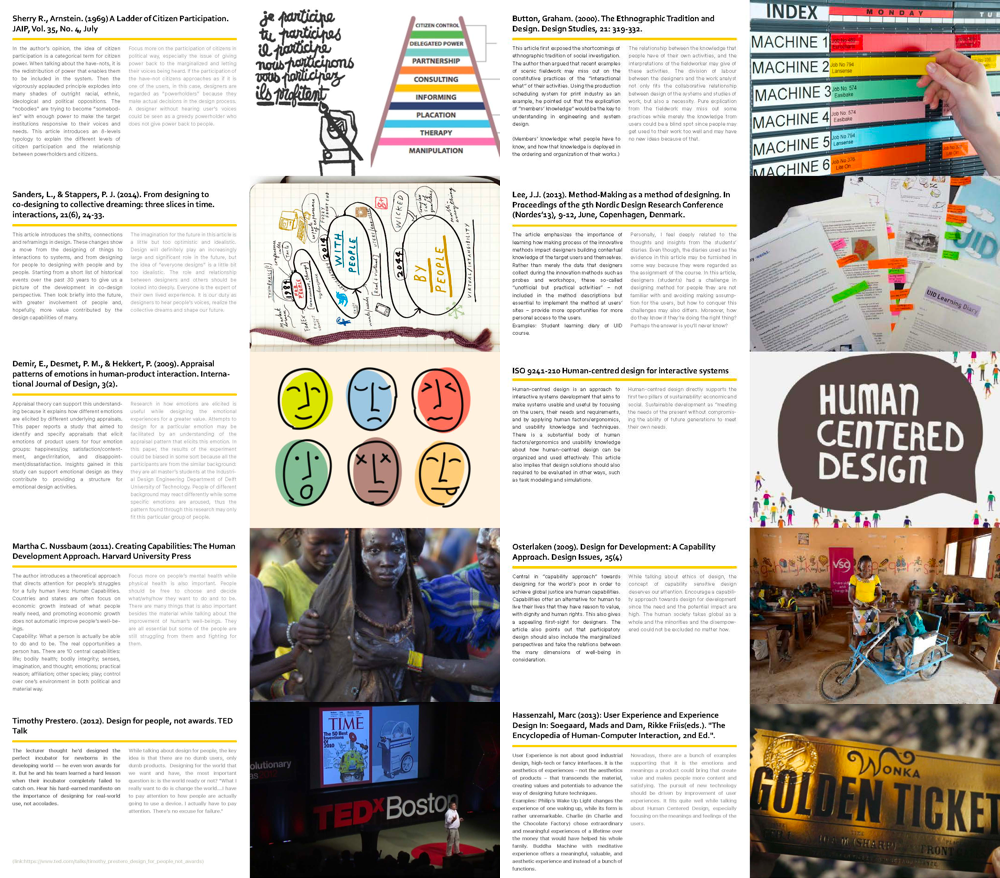

UIDi project was to design concepts for complex socio-technical-ecological systems. Students create six artefacts: an invitation to persuade stakeholders to collaborate on a problem, staging materials to support a genuine co-design process, a visual narrative to represent innovative interpretations of the problem, a diagrammatic representation that explains the networked relationships and critical issues that affect the problem, an image that communicates the key message of a design concept, and a proposal for a design concept that explains what the design is and how it works.
The goal is to design a social innovation for sustainable well-being. We chose parents with new born children as our target group. This is our final research question:
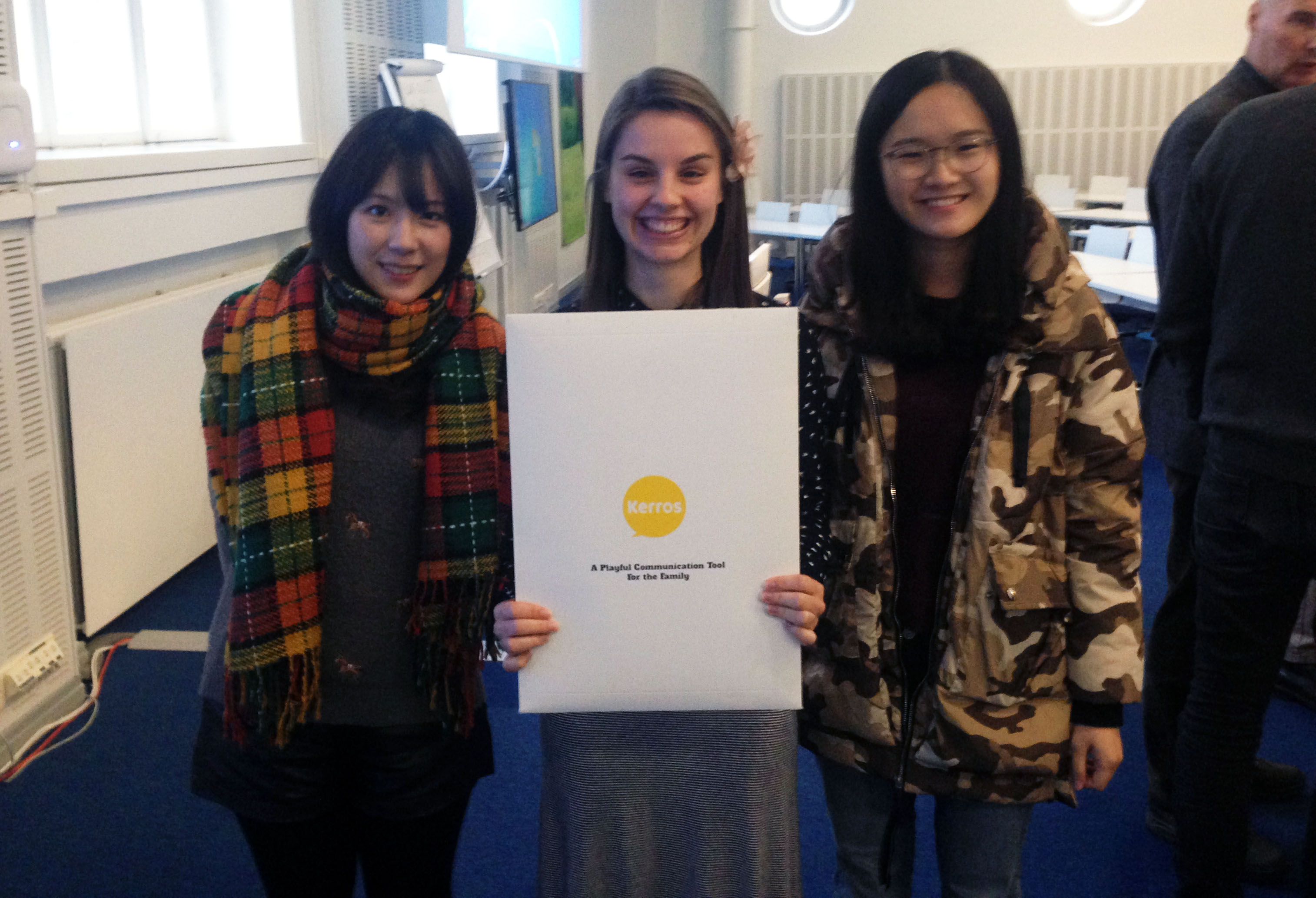

The invitation is for recruiting young mothers with new-born children for our workshop. It addresses the questions what, why, who, when. The language used in the invitation is avoiding design related jargon and the pictures and fonts are communicating empathy towards the participants by using children-friendly features.
We made a test workshop with the students and found out that there were things to improve. Our workshop aimed at understanding the parents of young children and their feelings during everyday life. We use stickers for the participants to communicate their emotions and noticed how the stickers helped the participants to recall and discuss their experiences. Also by offering options we made it easier to talk about all kind of feelings.

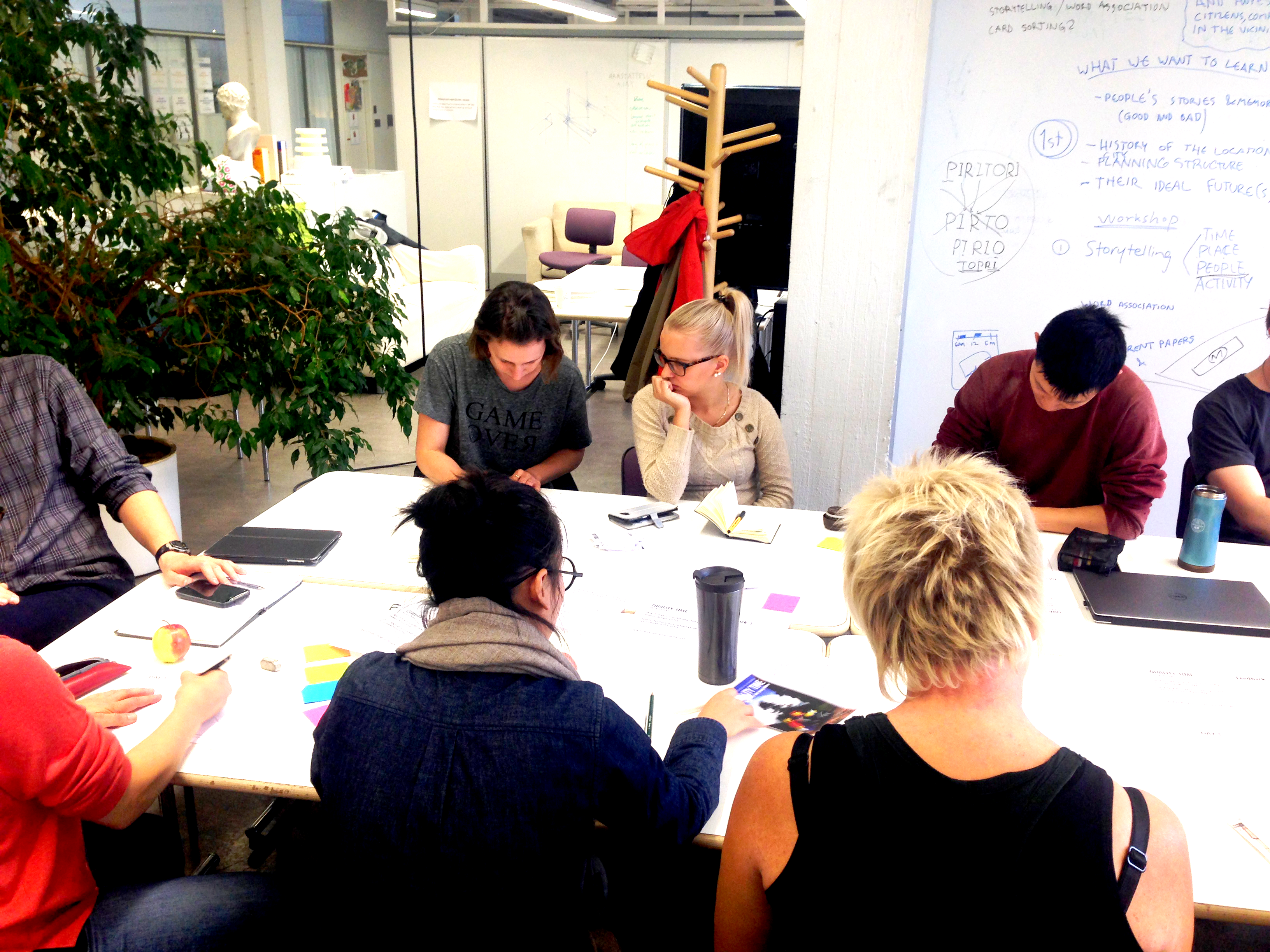
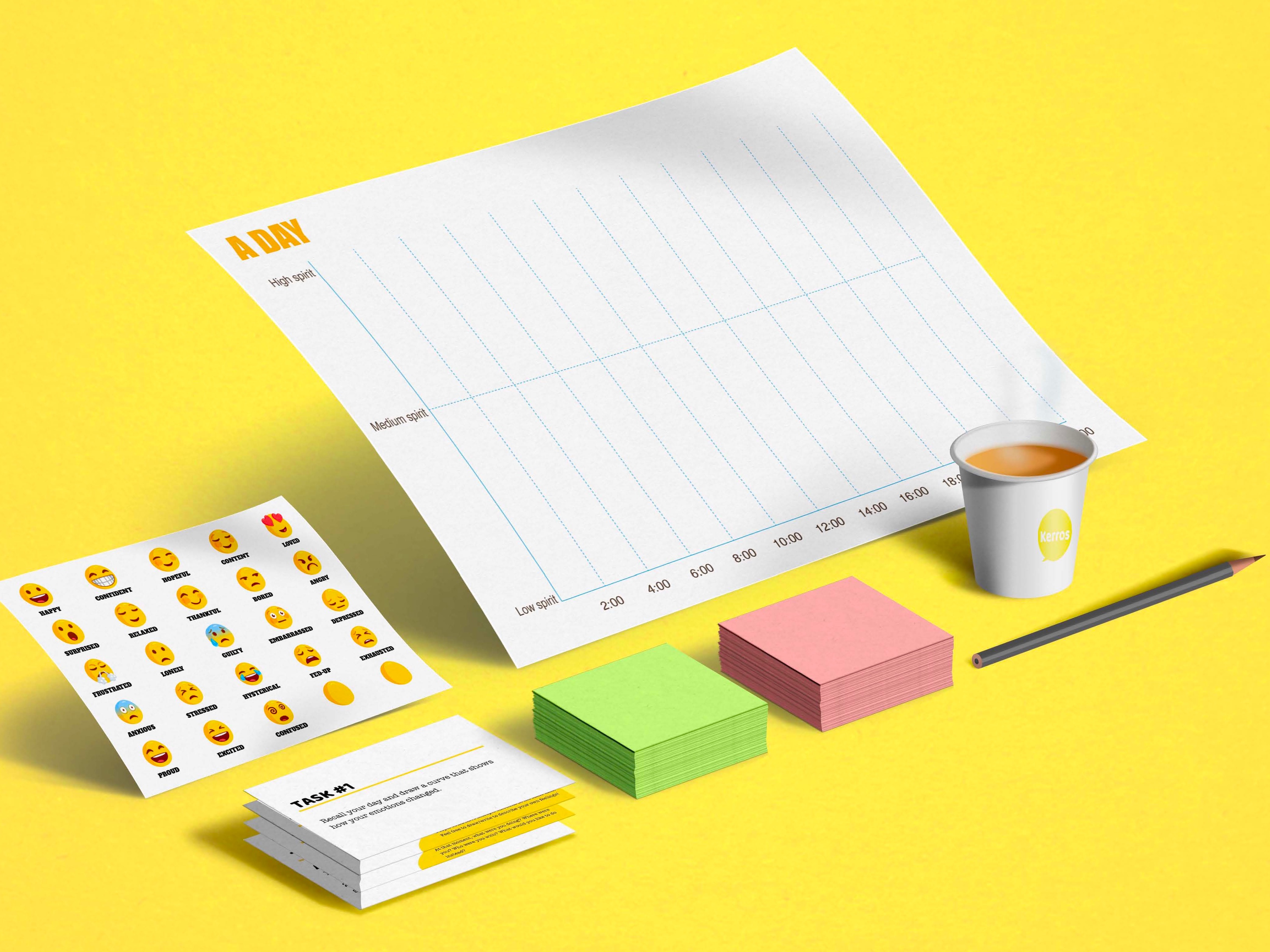
Empathy played a big role in our project. In the workshop we worked a lot on creating a warm and welcoming atmosphere for our participants: using relaxing music, flowers and offering coffee and some snacks for the mothers and baby food for the babies. The mother noticed our effort and were appreciating: "Oh, you have also baby food!"
We had to be flexible to deal with unexpected situations since we were not familiar with the topic of parenting. In the workshop, babies were keeping the mothers busy so the mothers had to multitask a lot. I also played with one of the babies to give the mother space to focus on the tasks.

After the workshop, we went through the records and wtore all the interesting findings on post-it. notes. We used affinity diagramming for sorting the data. In the end, we came up with 6 key themes to focus on in the next steps.
We used the materials from the workshop to create a plot. The story is about a day in a family's life. in the story, we focused in the mother's perspective, especially the experienced feelings.

The chart addressed networked relationships and critical issues of the parent's life. The aim of the chart is to find broader opportunities for social innovation. In the center of the chart is a profile of the mother. The first circle addresses the 6v main challenges based on the eariler findings. The second circle consists of the possible people involved in a mother's life. The lines indicate how the people are related to the challenges.
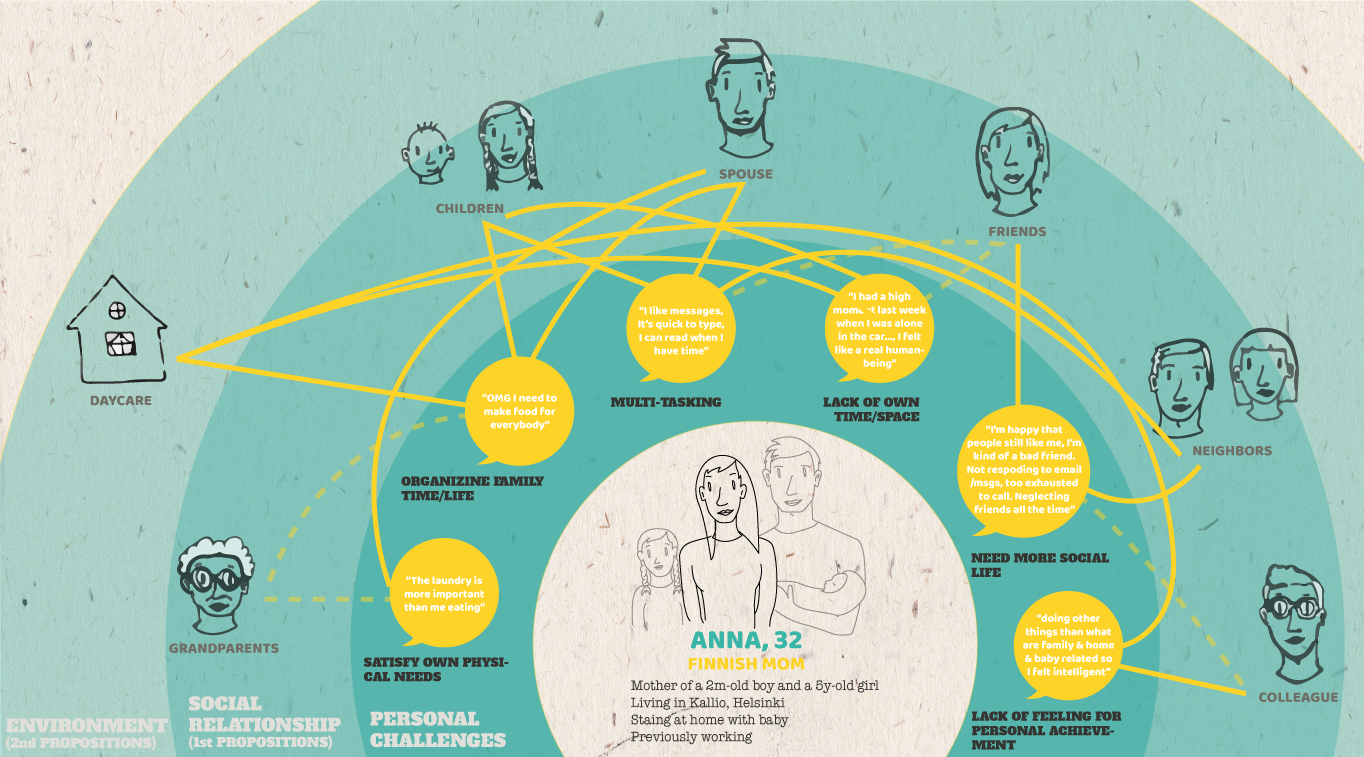
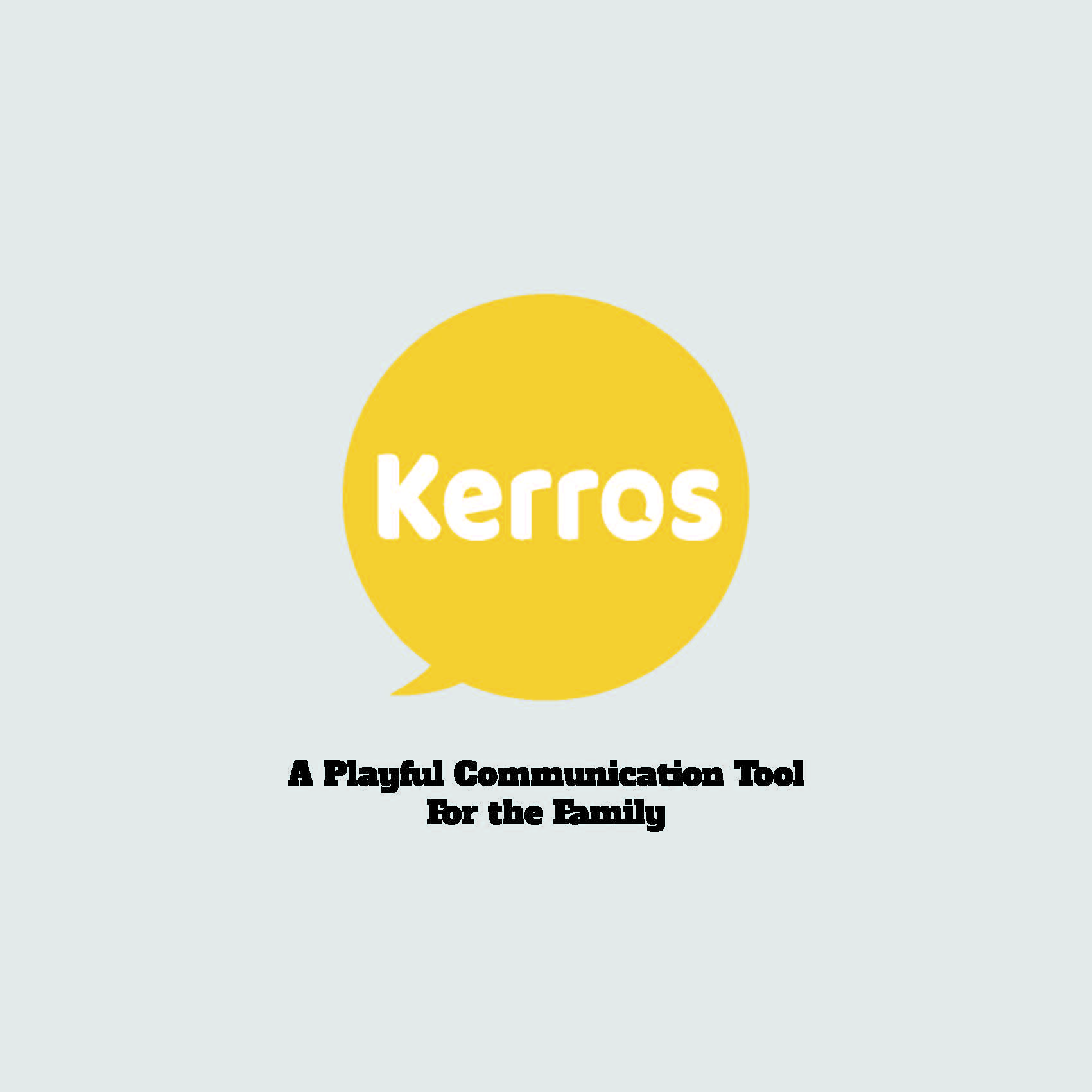
Kerros is a playful communication tool for the family. It's a communication starter in different challenging situations in the family's life. It consists of a game - Jenga, a booklet and a website.
The portfolio consists of a journey during our project. It addresses the six stages of our project. In this portfolio we present the process and the outcomes of different stages of the project. We also address the different designerly intelligences and attitudes that our group performed during the design project.
“Kerros” is delivered to families in the maternity package (Finnish: äitiyspakkaus). It is a kit granted by the Finnish social security institution Kela, to all expectant or adoptive parents who live in Finland or are covered by the Finnish social security system. The package contains children's clothes and other necessary items, such as nappies, bedding, cloth, gauze towels and child-care products. Through the maternity package we are able to reach a wide amount of families.
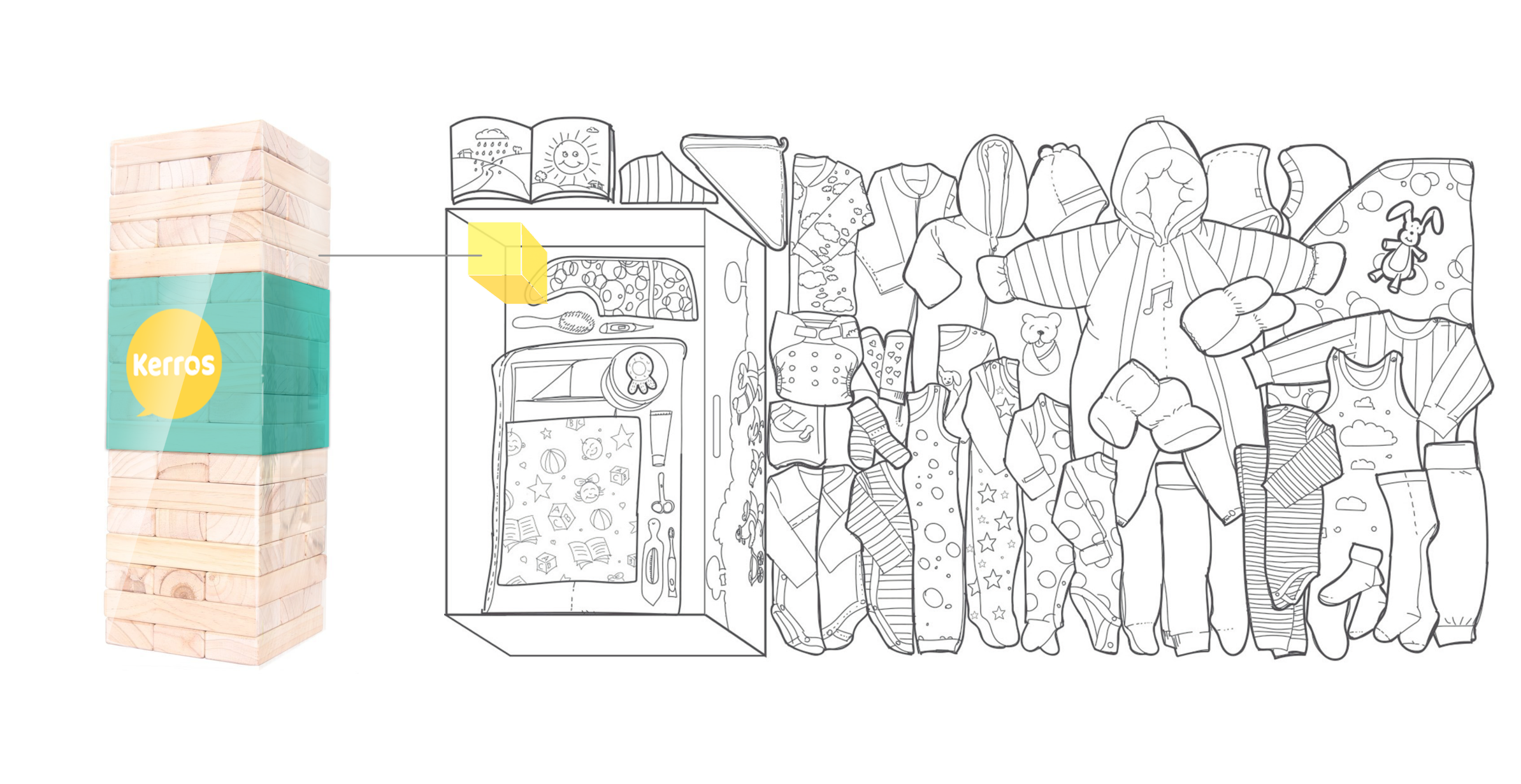

The system map describes the product in a bigger perspective. It shows how the product sustains over time and how it fits to the different needs in a family.
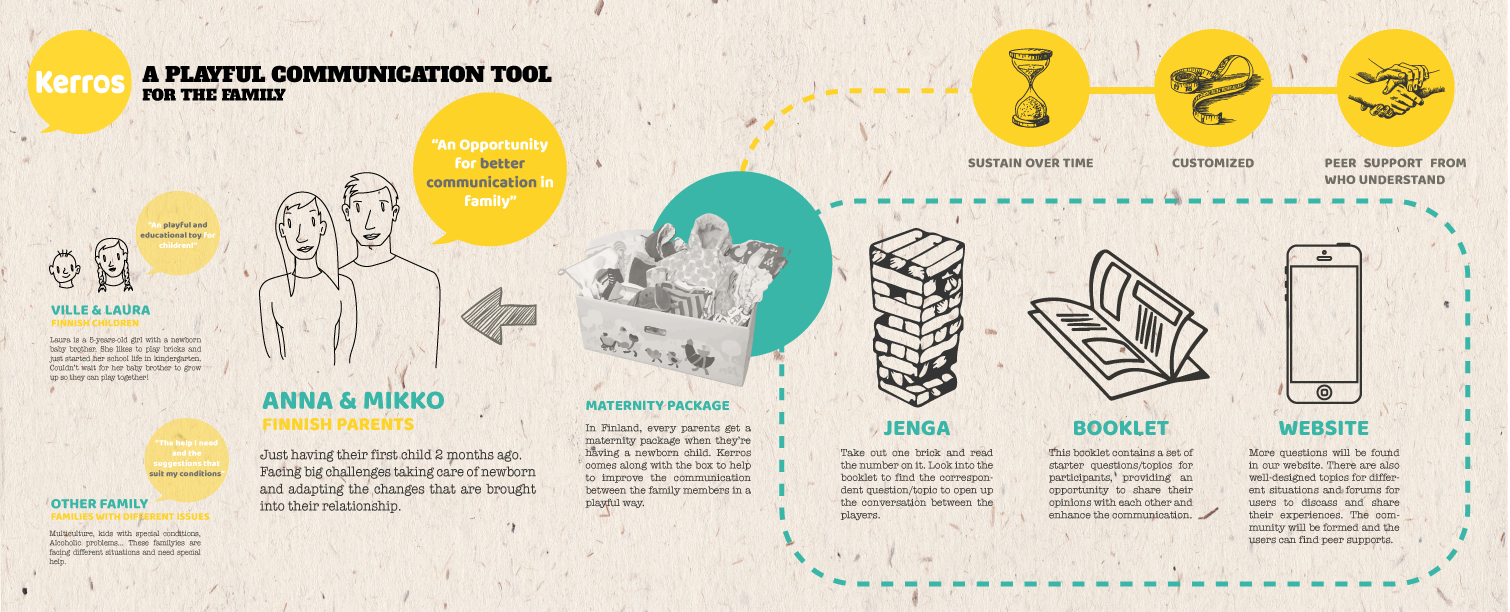
We worked together with the team in the corner, where we drew our project goals and phases on a whiteboard. When things changed, we updated the project plan in order to keep the team on track. The visulaization of the project objectives helped us to understand and keep in mind what was expected from us and it serves as a means of communication.
